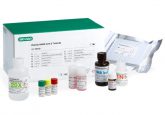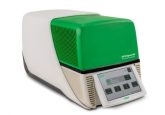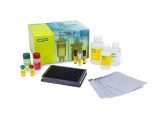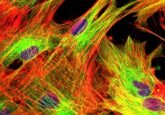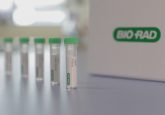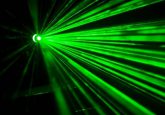New diagnostic methods to monitor blood disorders enabled by Bio-Rad’s droplet digital PCR technology showcased at 2019 ASH Annual Meeting
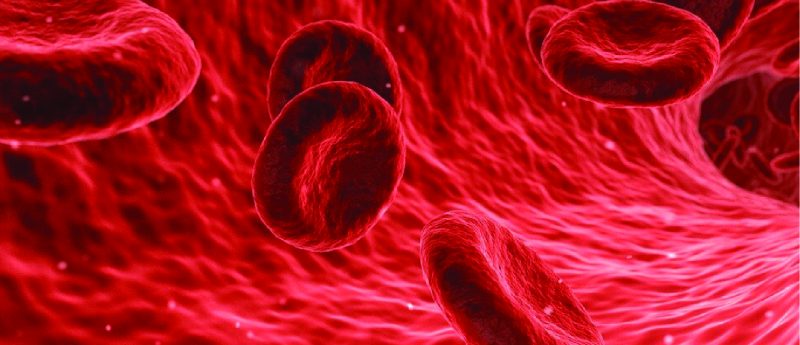
Orlando FL. – December 9, 2019 – Scientists have presented more than 40 abstracts highlighting research driven in part by Bio-Rad Laboratories’ Droplet Digital PCR (ddPCR) technology at the 2019 American Society of Hematology (ASH) meeting in Orlando Florida, December 7-10. The research presented illustrated the sensitivity, precision, and speed of Bio-Rad’s ddPCR, which enables researchers and clinicians to monitor biomarkers of malignant and nonmalignant blood disorders cost-effectively and at scale.
Below are highlights of presentations that demonstrated how ddPCR is used to monitor patients with hairy cell leukemia and chronic myeloid leukemia, particularly in cases when testing must identify low levels of the biomarkers to provide an early indication of whether or not a patient is responding to treatment.
ddPCR measures the response to treatment in hairy cell leukemia. Professor Pier Luigi Zinzani, MD, PhD, head of the Lymphoma Unit and professor of Hematology, and Alessandro Broccoli, MD, PhD, both of the University of Bologna, wanted to see if they could find a more sensitive test to determine if patients with hairy cell leukemia (HCL) are in complete response after cladribine (2CdA) treatment. Using ddPCR, they showed how patients with active disease display a higher fractional abundance of BRAF V600E ctDNA than patients in complete response.
Subsequently, as part of a larger study on 2CdA, Broccoli used ddPCR to test for the presence of this mutation in the peripheral blood of ten patients with HCL who exhibited complete response to 2CdA treatment for at least five years. Seven of these patients were BRAF V6500E-negative. Three patients were positive for the BRAF V600E mutation at 6.5, 8.4, and 13.7 years after treatment, and relapsed between four months and two years later.
Broccoli suggested that these data show how some patients who have long lasting responses after one course of 2CdA will display no evidence of the BRAF V600E mutation in peripheral blood and how ddPCR could potentially be used to monitor the disease activity over time.
“ddPCR is a highly sensitive method, much more sensitive than conventional PCR techniques,” said Broccoli. “This is particularly important for assessing the disease burden in HCL as it is usually characterized by the presence of just a few circulating cells.”
This poster (abstract 4005) was presented on Monday, December 9, 6:00 PM-8:00 PM.
ddPCR shows more precision than RT-qPCR for monitoring treatment response in patients with CML.
Monitoring the BCR-ABL1 fusion transcript levels is an effective way to monitor response to tyrosine kinase inhibitor (TKI) treatment in patients with chronic myeloid leukemia (CML). With the goal of evaluating the potential diagnostic value of ddPCR in monitoring TKI-treated patients with CML, Carmen Fava, MD, PhD, assistant professor at the University of Turin and her colleagues recently conducted a multi-centric study comparing ddPCR with the standard method, reverse transcription quantitative PCR (RT-qPCR).
Researchers from three different labs used these two methods to quantify the BCR-ABL1 fusion transcript levels of 37 patients segmented by their molecular response (MR) levels. The researchers found that ddPCR has good agreement with RT-qPCR, and that ddPCR more precisely quantified the BCR-ABL1 transcripts especially at low MR levels (4 and 4.5).
“ddPCR kit’s reproducibility, ability to express results in IS, and promising findings in several trials and reports suggest ddPCR’s potential for routine use in clinical settings to determine when treatment can be discontinued,” Fava said.
This poster (abstract 2092) was presented on Saturday, December 7, 5:30 PM-7:30 PM.
For TKI-resistant patients with CML, ddPCR enables more timely changes in treatment than NGS Sanger sequencing is a common method used to detect BCR-ABL1 mutations, which causes TKI treatment resistance among patients with CML who don’t respond well to therapy. Simona Soverini, PhD, of the University of Bologna and other researchers recently tested next-generation sequencing (NGS) and a novel ddPCR based multiplex assay as potential alternatives to Sanger sequencing for screening a panel of 13 BCR-ABL1 mutations relevant for TKI selection.
Preliminary evaluation of the ddPCR assay showed high concordance (>90 percent) with the NGS-identified mutations. The turnaround time of ddPCR was only one day. In contrast, NGS required 15 working days. The results suggest that multiplex ddPCR would be an easier, faster and cheaper alternative to NGS to test for mutations in patients who failed to respond to TKI therapy.
This poster (abstract 661) was presented on Monday, December 9, 10:30 AM.
For more details about these presentations please visit the ASH meeting schedule.
For demonstrations of select Bio-Rad products, please visit Booth #2016. To learn more about Bio-Rad’s ddPCR technology that will be presented at ASH, visit bio-rad.com/digitalPCR.
BIO-RAD, DDPCR, and DROPLET DIGITAL PCR are trademarks of Bio-Rad Laboratories, Inc. in certain jurisdictions. All trademarks used herein are the property of their respective owner.
